
“B,” I said to Lee as we neared the top of the small ridge. “B’s get degrees,” replied Lee. referencing the grade I had given him for the route he had taken me through the blowdowns. Knowing it wasn’t fair that I graded him on his route without giving him the criteria, I tried to explain.
“I grade based on how many times I bottom out on logs,” I said. “Hunting with my cousin Tyler can be miserable. I swear his hips are at my shoulders, and he floats through the blowdowns. I’m glad we are close to the same height.” Truthfully, he’d picked the least involved route by far, a true show of woodsmanship that can only be gained by spending time in the woods.
If you can’t give your hunting partner shit in good fun, they probably aren’t a good hunting partner. Our conversation drifted to whatever was on our minds. It covered everything from Elmer Keith and Jack O’Connor to the best chorizo dealers in Helena.
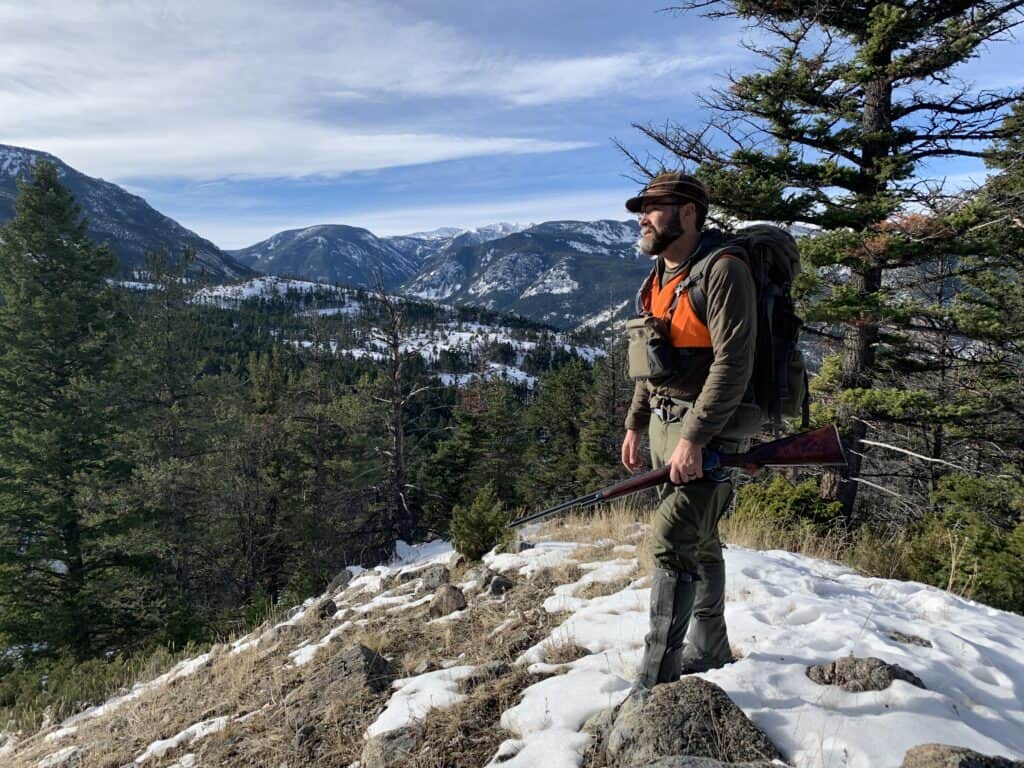
“We are on the shortcut to success,” Lee commented.
“What do you mean?” I said.
“We’re at the point where we are both distracted enough that something will happen. We are going to see deer soon,” Lee said.
I thought about it for a second, and he was right. How many times had I been successful by accident? When my mind drifts to everything but hunting, I find what I’m after.
I don’t want to mislead you into thinking we were just screwing around in the woods. In fact, it was just the opposite. Both of us have grown up in the world of hunting and have known it since we were young. Yes. We did a lot of bullshitting, but in a way that only we “seasoned hunters” do. Our dialogues would slow to a halt when we’d near the crest of a hill and would resume once we verified there wasn’t anything on the other side.
Around noon, Lee started to brag about the big lunch in his bag. Around the same time, I realized I had just five Oreos in my pack to feed on for the whole day. We found a nice drainage to watch over and picked a spot to replenish our burned calories.

“Deer!” Lee excitedly whispered before we could even think about getting our food out.
Their bodies contrasted perfectly against the snow roughly 100 yards away. “We wouldn’t have seen them in this thick stuff if it weren’t for the snow,” I said. We tried to get into a better position without any luck. “They didn’t take off like they were spooked,” I said to Lee. He agreed. “Let’s go after them after we eat. They won’t go far.”
Every hunting season, I run through the dilemma of which rifle to take out. Do I take out my tried and true 270 or challenge myself with an old open-sight rifle from the back of the safe? After talking with fellow Stockmaker, Lee of Big Sky Bespoke, I realized we were on the same page about needing to hit the woods with some classic rifles.
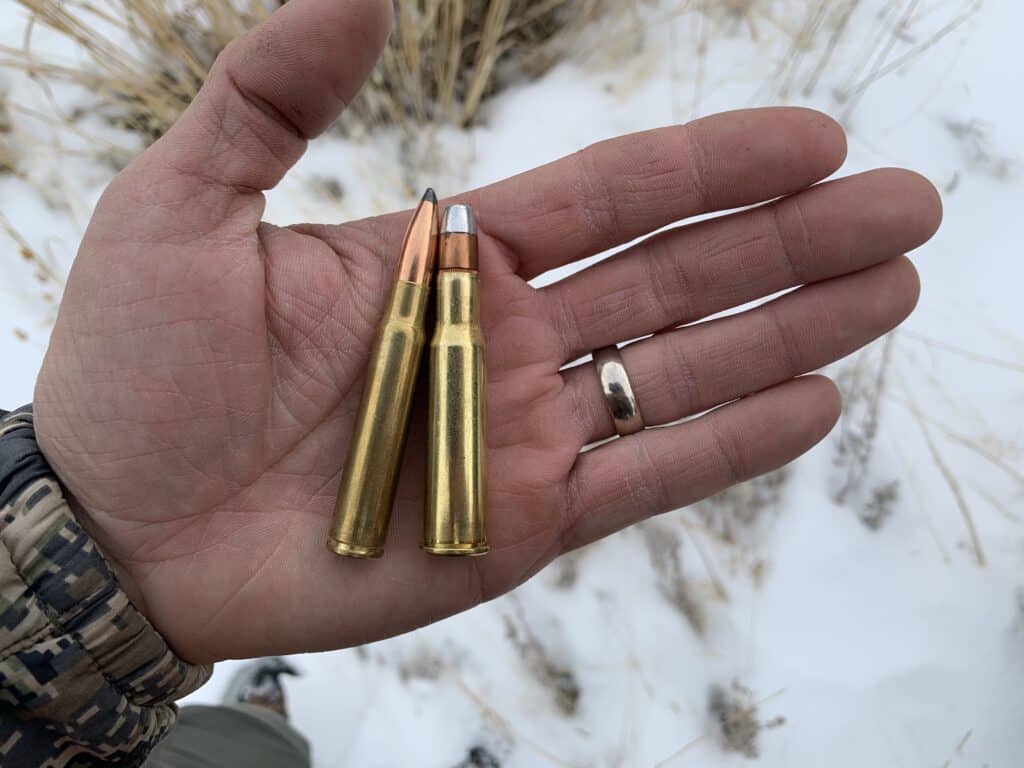
We were both fortunate enough to fill our antlered deer and elk permits early and had the last week open to fill our B-tags, which were good for whitetail doe only. Both of us grew up hunting whitetails, so this was something we looked forward to. We planned for the morning after Thanksgiving.
We didn’t set any guidelines for what we considered a “classic” rifle. It just had to be old and have some kind of cool factor built into it. What do I consider a classic? A model that was built with quality in mind, not quantity. Pre-64 Winchesters, early Remingtons, and in my case, early 20th-century Austrian hunting rifles.
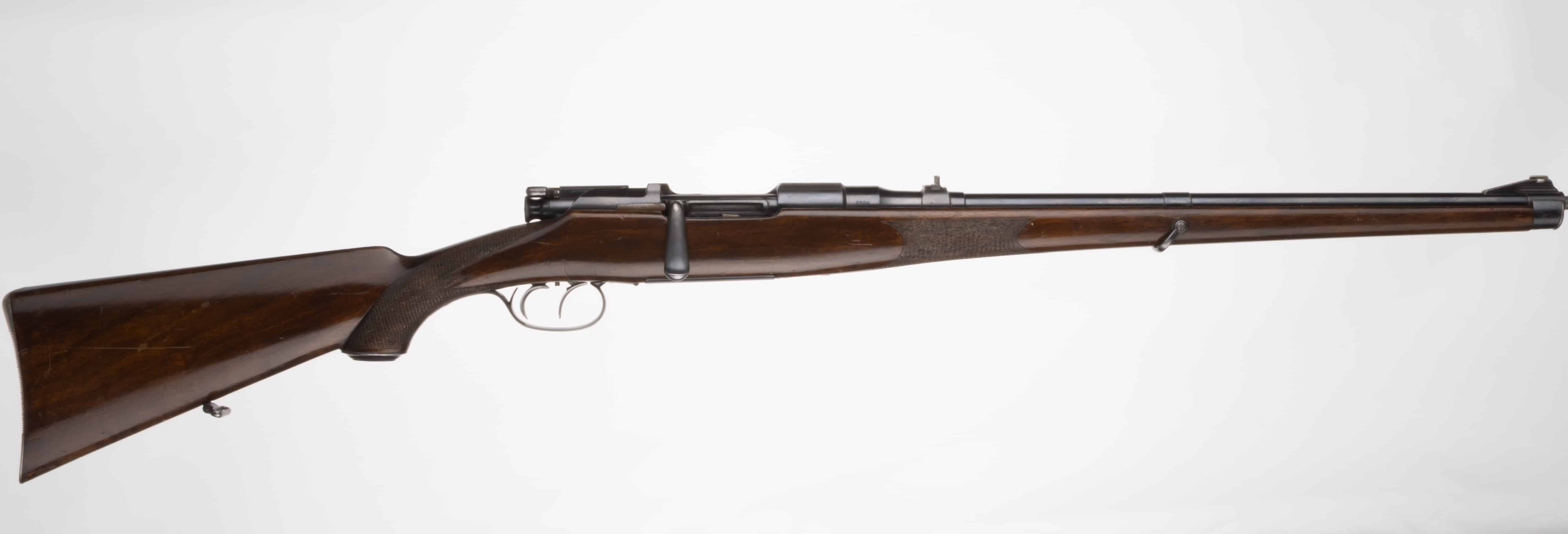
The Rifles
I was hunting with a Mannlicher Schoenauer Model 1908 chambered in the obscure 8×56 M.S. (Mannlicher Schonauer). This light six-and-a-half-pound rifle is a delight to carry in the woods and is made for mountain hunting. The European walnut stock extends to the end of the 20-inch barrel and doubles as a trekking pole or walking stick when needed. Loaded with an 8mm 200-grain bullet, it can be slightly snotty with recoil. The Mannlicher was a favorite of Hemingway, and after carrying it in the mountains, I see why.
Lee was carrying a classic Winchester lever gun. The Model 71. One of the lesser-known Winchester models out there. Made in 1953, this deluxe model originally came with checkering, sling swivel studs, and a grip cap. Seeing that it needed a facelift, Lee restocked it with a piece of seventy-year-old claro walnut from Northern California. The 24-inch barrel hucks 250-grain Winchester silver tips out at 2,390-fps, a deer stopper for sure.

This was a gentleman’s hunt with gentleman’s rifles. Kind of. The hours were very gentlemanly, not because we were lazy, but more so that Lee had to make a two-plus hour drive to my house before we drove another half an hour to the spot.
Now he was more than willing to show up even earlier, but I didn’t want to show up at this particular spot too early. It is a very popular elk spot and can sometimes be crowded going up the trail at first light. So we were surprised to be the only ones at the trailhead when we arrived. Perfect, I thought.
As we slid and climbed up the trail, we saw evidence of a previous hunter’s success, tufts of deer hair, and sled marks. The sled marks made the narrow frozen trail challenging to get a sound footing. It would surely be better coming down later, as it was supposed to warm up considerably and reach the low 50s.
Based on the northerly wind, we took a route I hadn’t taken before, hugging a fenceline that marked the public land boundary. The path was littered with deer tracks. A promising sign, but I was still nervous about whether we’d see anything. I have hunted this spot several times over the past weeks and seen many deer. However, that didn’t make me feel any better about the possibility of being skunked.
The first opening we came across, we sat down to observe for a bit. We sat quietly for all of five minutes, and the conversation turned to classic rifles and how they just don’t make them like that anymore. Although both firearms were made a few decades and a half a world apart, they are very similar. Their stock lines are clean. There are no sharp edges. Their rust-bluing has a depth that just isn’t achieved by new hot-blue methods. But most importantly, they both balance perfectly in the hand and at the shoulder. Craftsmen made these rifles, and it shows.
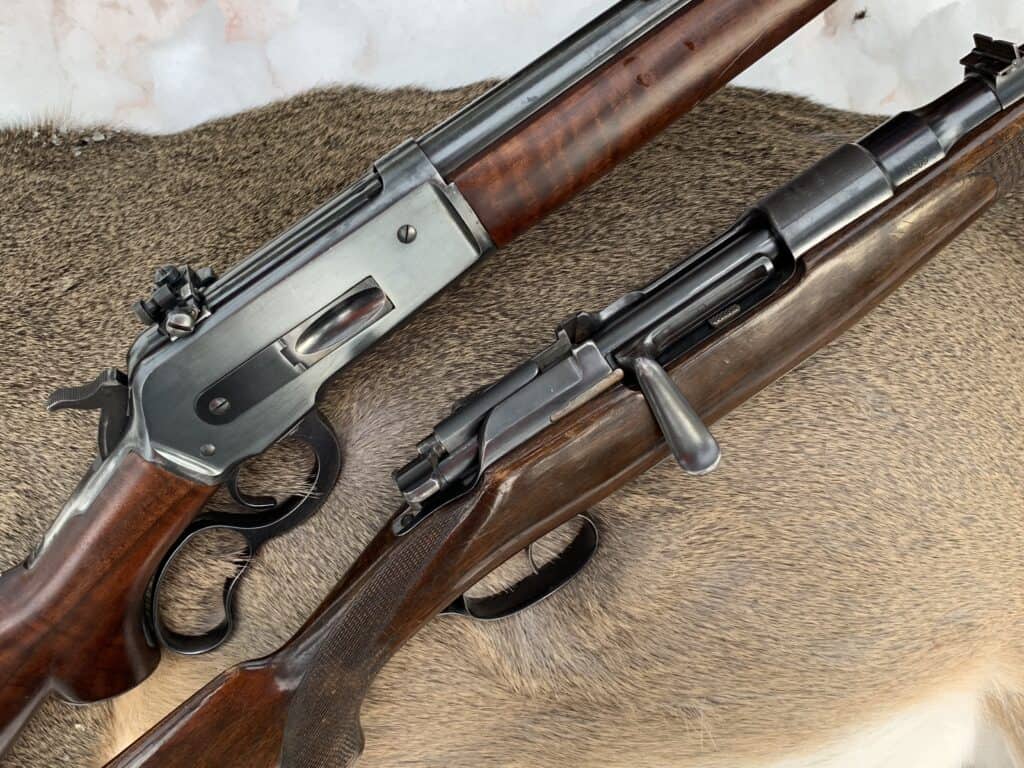
Lunch Time
I bragged about being able to go out all day long on five Oreos while looking jealously over at the layers of meat and cheese that made up Lee’s sandwich. Truthfully, I just hadn’t planned accordingly and suffered because of it.
With our bellies full, we side-hilled the mountain slowly and methodically. Stopping often to look, listen, and scan the thick timber. As we passed the scene of a slain Ruffed grouse, we knew the two does had to be close. We were following what looked to be bear tracks from a few days ago that paralleled the deer tracks we were on.
Just about the time, I started to run the logistics of getting my dog Sage to this stand of aspens to chase grouse, Lee quickly sat down on the trail and raised the Model 71 to his shoulder.
Both of us have hunted our whole lives, and not much needed to be said in the way of communicating. When he sat down, I sat down. Soon, I saw the deer that he did.
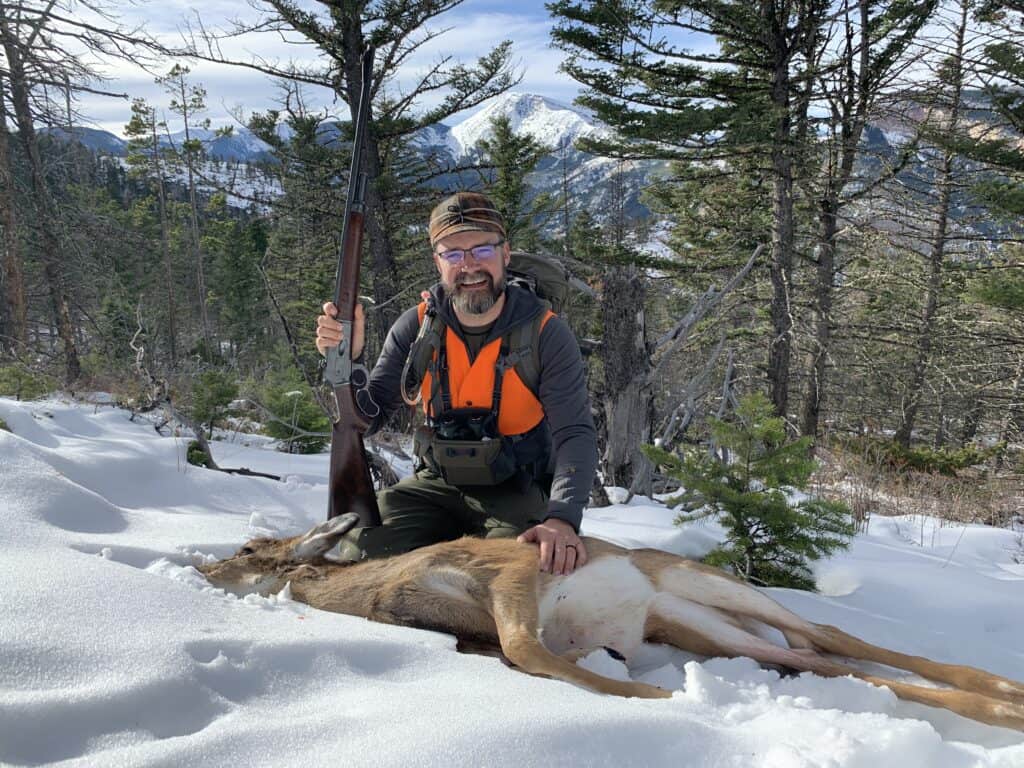
“Whooosh” Lee’s Winchester barked.
The deer bucked, turned, and headed downhill.
“Solid hit,” I said.
The deer looked like it was hit hard. We knew there was no way that it would get away from those silver tips.
As we got close to where the deer had been standing when he made the shot, I signaled to Lee that I would go over the ridge to see if I could get a shot at the other doe that the one he shot was with.
Gone. The other doe had left the country. I went back down to Lee, and we followed the blood trail.
It wasn’t hard to follow this blood trail. There was a ton of blood. Almost as if someone had walked through the woods with a can of old spray paint that had gobbed up a bit.
I don’t think the deer would have gone 50 yards if the grade hadn’t been so steep. After about 125 yards we found her piled up and went right to work quartering it up and putting it in our packs.
We hadn’t gone 50 yards before I spotted deer coming down the mountain. “Deer” I whispered as Lee looked at me as if I was messing with him. “One, two, four, there’s a lot,” I said to him. With a mess of brush between the deer and me, I immediately tried to find a better spot to get set up for a shot.
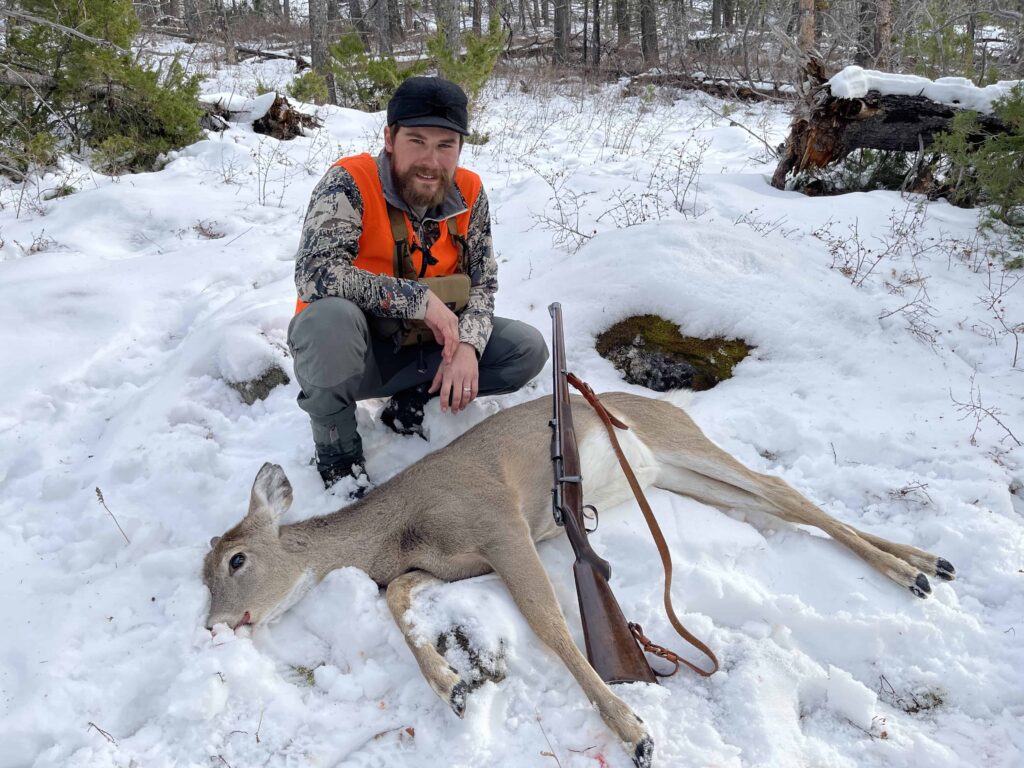
With my Mannlicher resting on a branch, I eased back on the trigger.
“Whoosh.” The short 8×56 barked.
“It sounded like a hit” Lee said.
“Lee look at this buck coming!” I said trying to be as quiet as possible.
The old mountain buck came running past us at 20 yards. Confused by the loud gunfire, he continued on around the mountain. He must have been pushing that group of does.
We moved forward and relocated the doe, not 50 yards from where I had shot her.
After verifying that it was the doe I had shot, I shot again. And again. And again.
Four more times…
I looked at Lee and said, “Are you seeing this!?” As I topped off the spool magazine.
It looked like a movie. With every shot that I took, a branch would explode between the deer and me. Had I been alone, I would not have believed it. It continued to stand broadside at about 120 yards until I finally dropped her.

“I can’t believe it. I’ve never seen anything like it!” I said in disbelief. “Apparently, this 200-grain bullet isn’t a very good brush round.” I thought, knowing that so-called brush cartridges are more a myth than anything else.
“Dude, we did it. No hunt ever turns out like this.” I said. “We set out to kill two does and did it!” We were pumped.
The doe I shot died on the hiking trail we planned to take back to the vehicle. After moving it off the trail, we quartered it up and loaded the meat into our packs. We had a 3-mile hike back to the 4Runner.

Both of our seasons had been remarkable. Our families would be eating well, and each had a whole new catalog of adventures in our memories.
As it turns out, hunting rifles don’t really become obsolete. Only the skills required to be successful with them do. Challenge yourself and take your grandpa’s old lever gun afield next year. It enhances the experience as you put your dings and dents on it, adding another chapter to its history.
Lee does some excellent stockwork on custom rifles and also has some great stories over on his website, please visit him over at bigskybespoke.com and see for yourself!
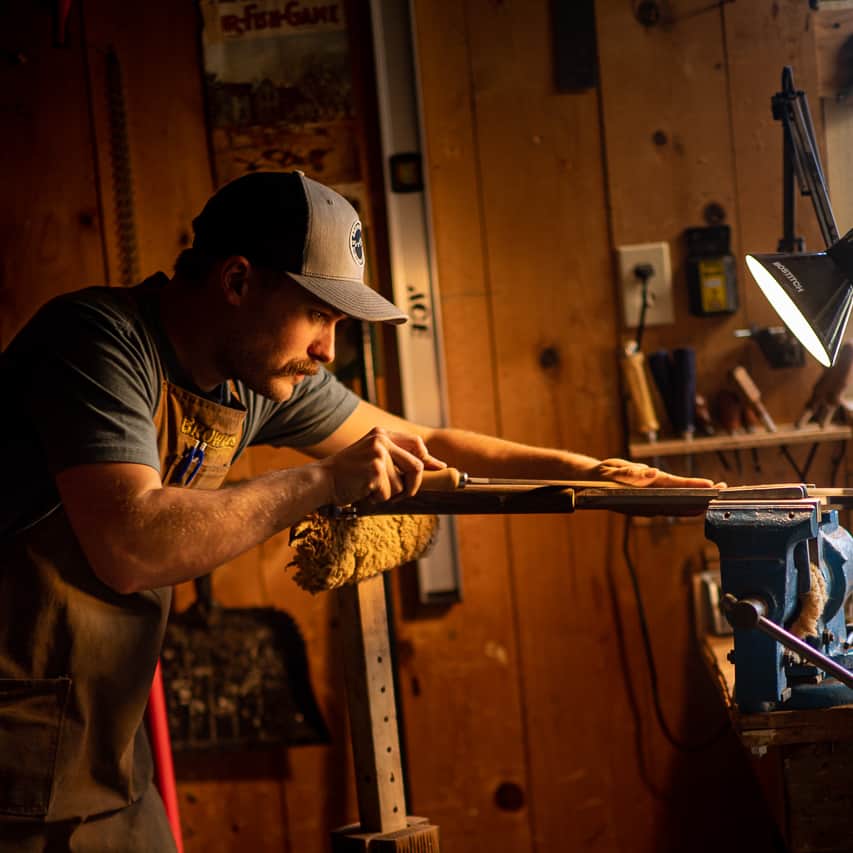
Written by: Kurt Martonik
Kurt is a Gunsmith, Reloader, Hunter, and Outdoorsman. He grew up in Elk County, Pennsylvania, where he became obsessed with the world of firearms. Following high school, Kurt enlisted in the United States Air Force as a Boom Operator, where he eventually rose to the position of Instructor. After his military service, he attended the Colorado School of Trades(CST) in Lakewood, CO for gunsmithing. Following graduation, he accepted a job at C. Sharps Arms in Montana, where he worked as a full time stockmaker and gunsmith.
Loving the peep on that 71!